The rise of Anshun’s golden thorn pear: from wild fruit to sought-after commodity
China.org.cn by Jin Ling, June 09, 2025 Adjust font size:
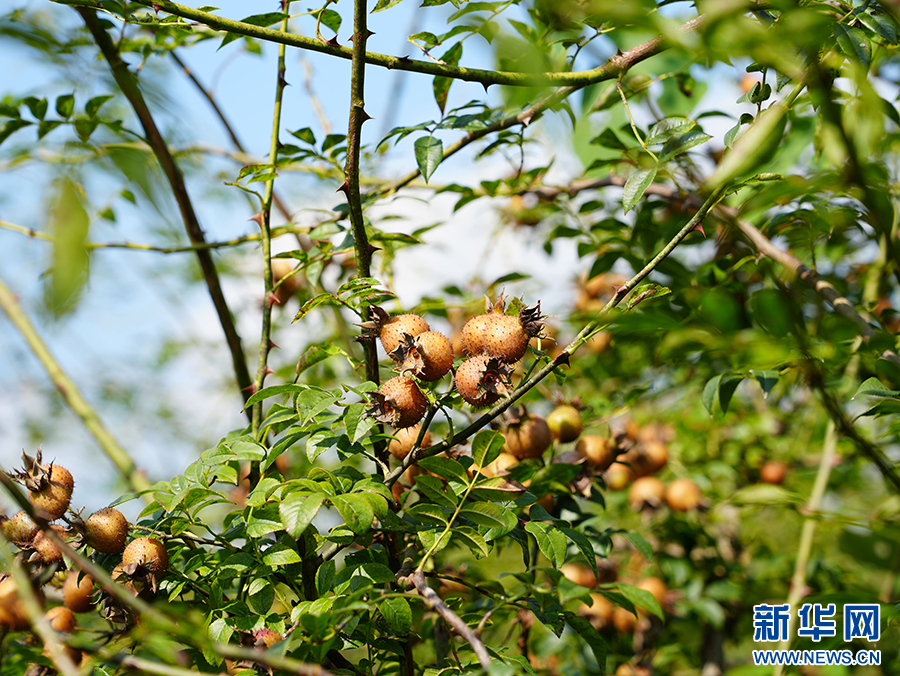
Golden thorn pears abound in Anshun Economic and Technological Development Zone, Anshun City, Guizhou Province. [Photo by the Anshun Economic and Technological Development Zone Publicity Department / Xinhuanet]
In the midsummer months, the rolling hills of Anshun Economic and Technological Development Zone, Anshun City, Guizhou Province, which is located in southwestern China, are blanketed in the lush green of the golden thorn pear trees that grow there. Tireless efforts have been made to transform the once wild and mostly overlooked fruit into the basis of a thriving value chain in recent years.
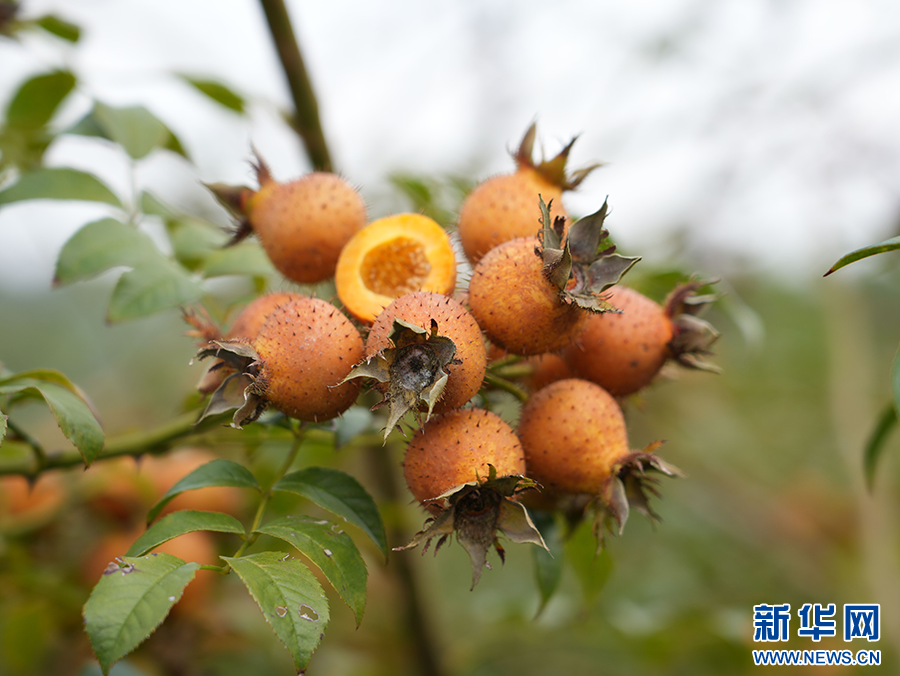
A cluster of ripe golden thorn pears hangs from a branch. [Photo by the Anshun Economic and Technological Development Zone Publicity Department / Xinhuanet]
A stunning transformation
In April 2024, a Guizhou golden thorn pear juice live commerce event set social media abuzz in China, and all 10,000 boxes of the fruit that were available were sold in just 16 seconds. Demand was similarly strong when more stock became available, leaving fans in awe.
Customers shared their nostalgia for thorn pears online. “They were part of my childhood,” one user commented. “The mountains used to be full of this little fruit. Who knew one day it would be used to make a popular drink?” another wrote.
The golden thorn pear is rich in nutrients, particularly vitamin C. Almost 3 grams are present in every hundred grams of the fruit – 10 times the concentration present in kiwis and 500 times that in apples – resulting in it being known as the “king of vitamin C” as well as a gastrointestinal cleanser and vascular cleanser.
In 2016, the Anshun golden thorn pear was awarded national geographical indication protection, solidifying its status as a valuable agricultural product.
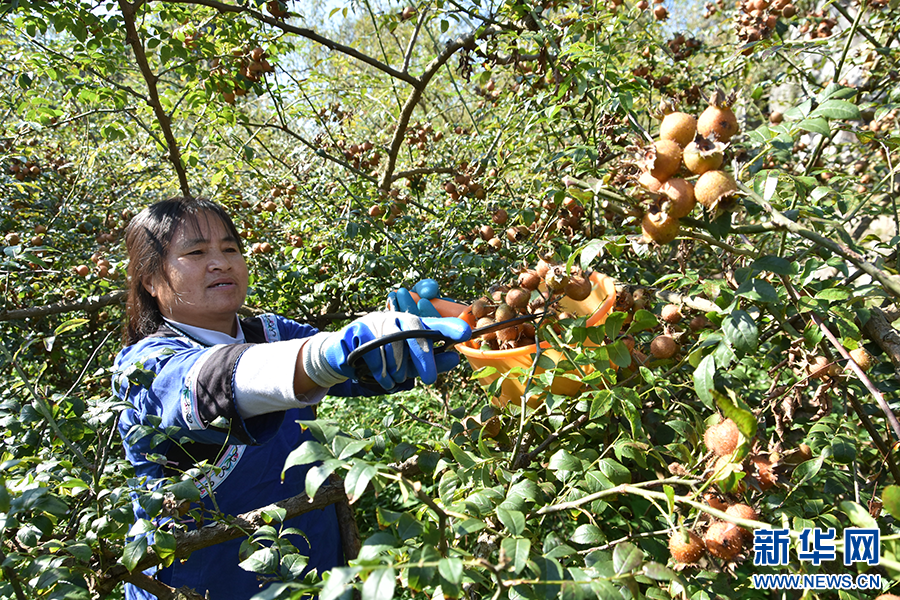
A farmer harvests golden thorn pears in the Anshun Economic and Technological Development Zone. [Photo by Xinhuanet]
A serendipitous beginning
The thorn pear’s journey from obscurity began in 1990 when Duan Shunli, son of a forest worker in Anshun city, discovered a wild seedless thorn pear seedling in the mountains. Intrigued, he transplanted it from the area to the land surrounding his home. In 2003, researchers from the Anshun Forestry Science Research Institute – an organization tasked with promoting scientific and technological development, engaging in forest conservation and cultivation, and researching topics such as forest genetics and breeding, garden plants and ornamental horticulture, the protection and utilization of wild plants and animals, soil and water conservation, and desertification control administered by the Anshun City Forestry Bureau – began working to develop the fruit further. After years of meticulous research, a seedless cultivar with fewer thorns; sweeter, crispier, juicier, and less-sour fruit; and higher amino acid and micronutrient content was successfully developed, and it became known as the golden thorn pear.
The popularity of the golden thorn pear began to increase rapidly after it hit the market. It commands an average of over RMB40 (US$5.62) per kg and has sold for up to RMB60 (US$8.43) per kg – remarkable prices for what was once a wild fruit that was unknown outside the local area.

A view of a golden thorn pear orchard in Awaizhai village, which is located within the Anshun Economic and Technological Development Zone [Photo by the Anshun Economic and Technological Development Zone’s Integrated Media Center / Xinhuanet]
Greening the mountains and improving livelihoods
Anshun city features a striking karst landscape and suffers from severe rocky desertification. Eighty percent of its territory is composed of mountainous terrain, bodies of water cover 10%, and regular arable land comprises just 10%. The city’s rough terrain has long been a challenge for locals seeking to make a living from agriculture. The golden thorn pear, which thrives even on rocky soil, has thus proven to be a lifeline for Anshun.
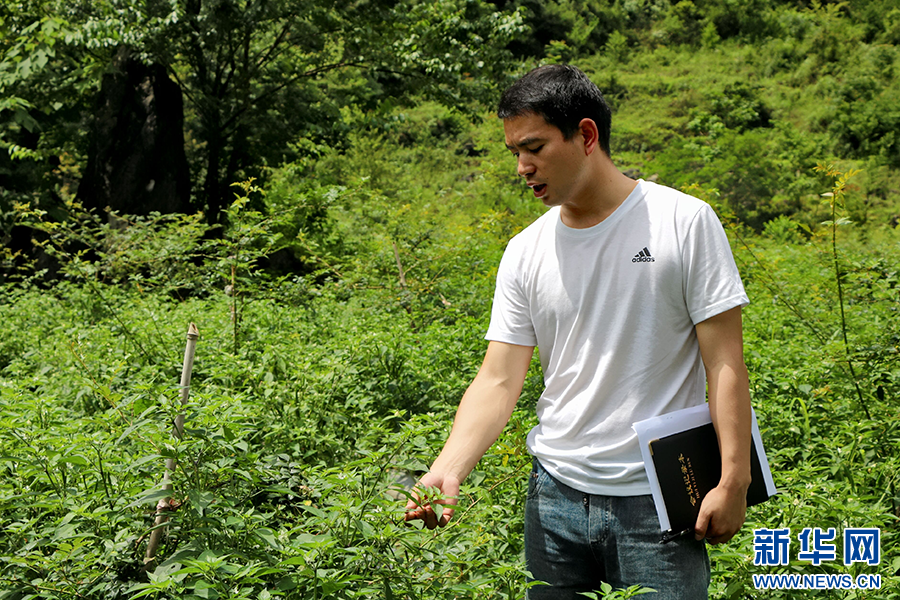
Anshun Economic and Technological Development Zone Agriculture, Forestry, Animal Husbandry, and Water Conservancy Bureau employee Su Ruocheng describes the intercropping models that are used in the administrative area’s golden thorn pear orchards. [Photo by Tan Shixie / Xinhuanet]
Special intercropping models have been implemented in the Anshun Economic and Technological Development Zone, which is one of Anshun City’s key golden thorn pear production areas, in order to make the most of the zone’s farmland. Peppers grow alongside the trees at the golden thorn pear cultivation base in a hamlet located within the development zone known as Awaizhai village, for example, which helps conserve water and soil and provides farmers with an additional source of income during the golden thorn pear tree’s initial growth years.
“Intercropping makes it possible to use the land that golden thorn pear trees are grown on effectively during the first three years of their lives, when they don’t yield fruit,” explained Su Ruocheng, a staff member at the Anshun Economic and Technological Development Zone’s Agriculture, Forestry, Animal Husbandry, and Water Conservancy Bureau, in late July 2024.
Golden thorn pear cultivation requires regular maintenance and management, which generates employment opportunities for local farmers. Standing at a significant 3,333-plus ha, also as of late July 2024, the area that the fruit is grown on in the Anshun Economic and Technological Development Zone has continued to expand since 2022 as a result of corporate investment, large-scale farming, and small local farmers working together to maximize land use.
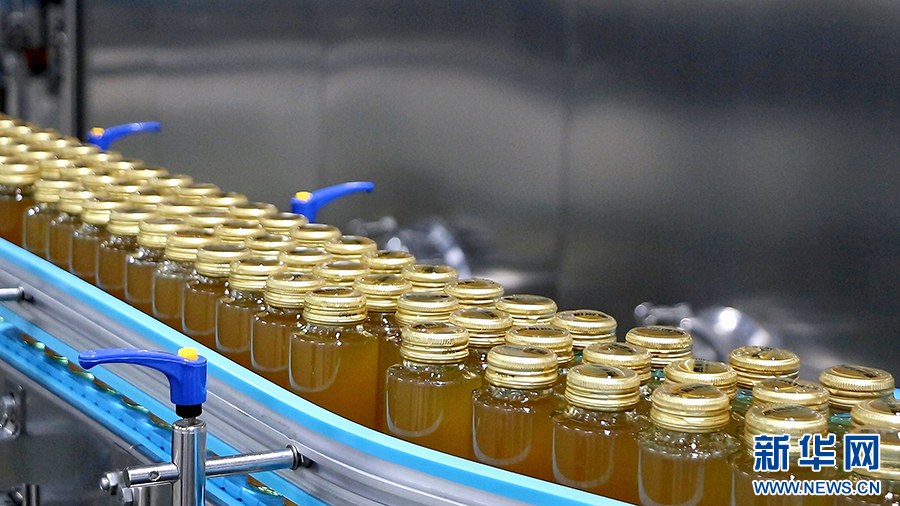
Golden thorn pear beverages make their way down an intelligent production line in Guizhou. [Photo by Tan Shixie / Xinhuanet]
From fields to factories
As the golden thorn pear industry grew, new challenges emerged. How could the processing industry develop to meet rising demand? And how could farmers see greater returns?
The companies that operate in the industry have been expanding and developing. An employee at a company that features smart machines that hum with efficiency as they produce golden thorn pear beverages at a state-of-the-art factory named Chen Zhanhao mentioned that its production lines can handle 150 metric tons of fresh fruit daily and churn out 12,000 120-ml bottles of juice per hour.
The products that the company produces are now a fixture in major supermarkets in China – a profitable destination for them. The company works directly with local farmers in order to ensure a steady supply and signs purchase agreements with guaranteed prices in order to boost growers’ confidence. More than 1,000 households have benefited from the arrangement, and the company purchased an estimated 3,000 metric tons of golden thorn pears from them in 2024 alone.
Chen added that 90% of the company’s employees are from the local area but that many of them used to work elsewhere.
“I earn about RMB4,500 (US$632) a month and also get insurance that my company pays for,” he concluded. “It’s great to be able to support my family while working locally.”

Visitors watch a performance at Anshun Economic and Technological Development Zone’s Shili Lotus Trail Park during the zone’s 2024 cultural tourism season, which featured the “Rural Lotus Engagement with You” theme. [Photo by Zhang Beibei / Xinhuanet]
A bright future: vitalization via tourism and innovation
In recent years, the Anshun Economic and Technological Development Zone’s golden thorn pears have become an integral part of its growing tourism industry. Cultural offerings and destinations such as the zone’s Shili Lotus Nature Park, which features 12 km of scenic roadways, 14 km of walkways, a picturesque river and footbridge, and a zipline, among other attractions, have been integrated into a “golden thorn pear township” at which tourists can enjoy striking beauty, harvest fruit, savor local delicacies, camp, and even try their hand at winemaking.
The companies that engage in golden thorn pear processing in Anshun have been pushing the boundaries of innovation. From health products and beverages to cosmetics and skincare, the golden thorn pear is finding its way into a variety of markets.
“We need to continue to diversify our offerings and expand and increase the visibility of our brand,” noted Yan Fuquan, the chair of the zone’s first golden thorn pear processing company.
Helping to boost the local economy while preserving cultural and environmental heritage, the efforts that have been made to develop the once-humble thorn pear into a thriving industry have become a symbol of rural vitalization in China.